
‘Standish Lawder is an underground filmmaker. In a sense this is an inside joke—he first made films in the basement of his home in New Haven; now he works in his basement film studio at Yale where he also teaches. Furthermore, he seldom shoots films outdoors, but works within restricted spaces, enclosed by walls, by the camera’s immobility, or perhaps by the preexisting limits imposed by his choosing to make new films from old films. Lawder is better described as an experimental underground filmmaker because of the way in which his films lead the viewer to a particular consciousness of their speculative nature.
‘Necrology, 1969–70, is, paradoxically, both a film containing no camera movement and an important one in the history of camera movement. The first image appears to be produced by a crane-mounted camera moving down a row of people standing on an inclined surface, such as a football stadium. People move into the frame from the bottom, then move across the frame to exit at the top. As this process continues, a viewer might begin to see the film as part of a tradition of long camera movements. Orson Welles’ 1958 Touch of Evil opens with an extraordinarily complex camera movement over three minutes long. Jean-Luc Godard’s 1968 Weekend contains what appears to be a 15-minute tracking shot of a line of cars caught in a traffic jam, as well as a continuous six-minute movement circling the inside of a farmyard in both directions. Long camera movements range from early ones, such as those astonishing shots made from a downward moving elevator in the Babylon section of Griffith’s 1916 Intolerance, to the three hours of movements in Snow’s 1970–71 La Région Centrale. Necrology is a part of this tradition, but not for the reason a viewer might initially assume.
‘The camera moves without a pause down an apparently endless row of people. At first, the viewer may think that something equivalent to my football stadium/huge crane situation is the source of the images; next the viewer may be awed by the length of the camera movement; then doubt about the football stadium/ crane explanation may begin because no crane is that big; finally the viewer may realize that something else is happening. The explanation that there could be a camera movement producing the effect seen in Necrology gradually ceases to be plausible. At this point, an observant viewer may begin to look beyond the procession of people and see the metal steps of an escalator behind them. This seems to be an explanation: the people are moving on an escalator, and the camera is stationary. It only looked like it was going to be the longest camera movement in the history of film—there was no camera movement at all.
‘Is it as simple as that? The image in Necrology could be made by a camera moving down and in front of a vertical row of people in a stadium. In order to produce this direction of movement by filming an escalator with a stationary camera, the people should be riding an up escalator. People riding an up escalator face the steps, but the people in Necrology are facing the camera. The viewer is bewildered and increasingly conscious of the mysterious quality of the images. The images, which initially seemed so simple, now appear enigmatic. The organization of Necrology leads the viewer to gradual consciousness of an initially unimagined complexity behind the creation of the images. Thus, the structure of the film directs the viewer toward an awareness of the filmmaking process. A tricky special-effects shot in a Hollywood film and particular shots in other films produce this awareness: in both Murnau’s 1927 Sunrise and Welles’ 1942 The Magnificent Ambersons, shots show the metal tracks guiding the camera’s movement. Lawder is more subtle: the form of his film extends a growing awareness of the film medium over the entire length of the work.
‘Dangling Participle, 1970, is Lawder’s most complex found footage film. It is so carefully put together from a number of prints of six ’50s classroom films and a sex education record that the viewer might think it is authentic. A more typical reaction during the first viewing is not to think about it at all—it is just seen as a funny film. A viewer seeing the film a second time can begin to ask the questions that Lawder films usually raise about the process of their creation. This can lead to a consciousness of the repetition of some of the images—Fernand Léger’s 1924 Ballet Mécanique can repeat images, but not a ’50s educational film—and of the improbability of a teacher making the comments found in the narration. As this questioning continues, the film begins to look different, to look like a film made from other films with the narration built up by joining pieces of a tape recording. It is the best example of Lawder’s interest in reversing the viewer’s anticipated reaction to a film: cartoons are funny; sex-education films are serious. Lawder uses cartoons in ways that are not funny (Runaway, Roadfilm) and has made a hilarious sex education film.
‘Corridors are enclosures for moving people. They are spaces that are moved through, not looked at. Corridor, 1968–70, starts with an extended camera movement down the entire length of the corridor outside Lawder’s film history classroom. On first viewing, this can be taken as a conventional camera movement showing the size of the space relative to a person moving through it with a hand-held camera. But like many other beginnings of Lawder films, it is more complex than it first seems. The opening shot actually extends the corridor in both space and time. The shot combines the effects that would be seen by a human eye which had sharply focused peripheral vision and was simultaneously looking through the wrong end of a telescope. This is the appearance of a shot made with a wide-angle lens—in this case a 5.7 mm on a 16 mm camera. The time is extended through the use of slow motion—54 frames per second. These are not likely to be sensed during a first viewing: if the viewer had ever been in the corridor then the peripheral vision effect or the extended length would be obvious camera produced distortions. Or, if a person were seen walking in the corridor, the degree of slow motion would be apparent. As it is, the corridor only looks like an extremely long space being moved through very slowly. When the camera reaches the end of this two-and-one-half-minute exploration, there is a cut back to a shot from the starting position and a change in the electronic music sound track. At this point the film begins again, but this time the space is shown in an extremely complex series of images.
‘The opening shot of Corridor contains both the subject matter and the method of the film. However, the viewer only gradually becomes conscious of this, and in a similar way to other Lawder films. In this film, space is examined in ways which emphasize the differences between film image and vision. In less carefully worded phrases, the film concentrates on distorted images. After the first subtly distorted shot, the film becomes a flashing, rhythmical, pulsating series of images. The black-and-white images seem to be showing every detail of the space in as many ways as are possible in a 21-minute film: wobbly movements down the corridor; positive and negative images; images produced by a camera whirling around a bar placed in the center of the corridor; a nude woman standing with her limbs spread as if to give a human measurement of scale to the space; and superimpositions of five images. These images are accompanied by an electronic music sound track of comparable complexity and intensity. It is in part a Terry Riley composition and in part Lawder’s own work. The images and music combine to produce a sense of constant movement—nothing is static in Corridor. This is absolutely appropriate in a film based on a camera moving through a space designed for moving people.’ — John W. Locke, Artforum
____
Stills
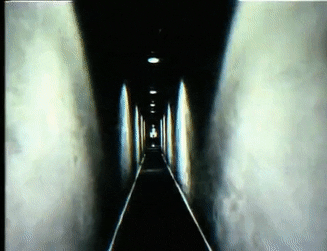
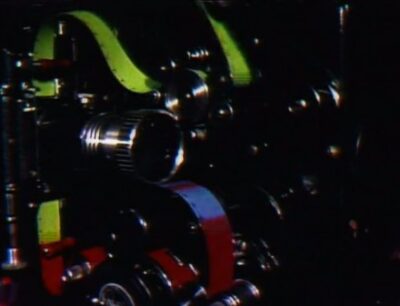
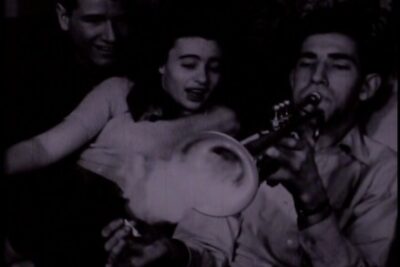
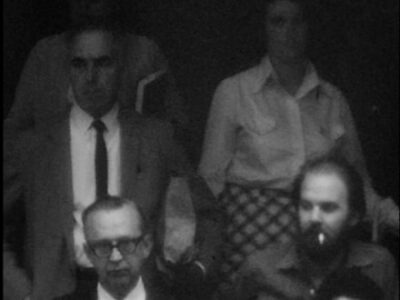
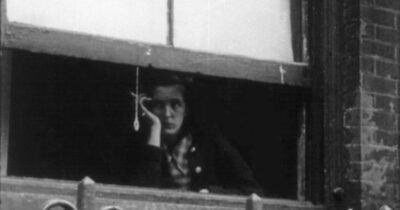
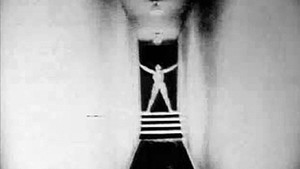

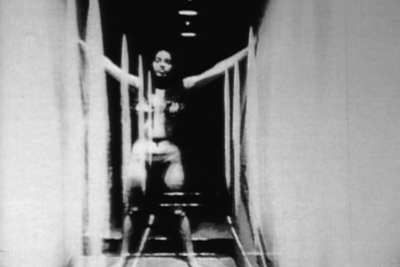
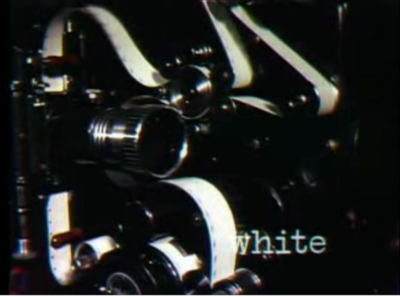
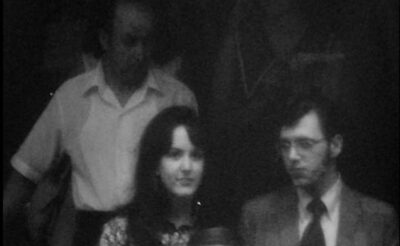

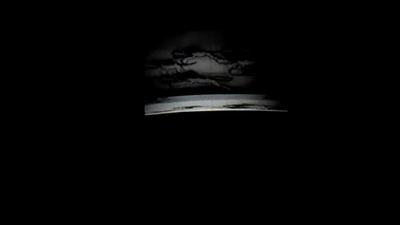
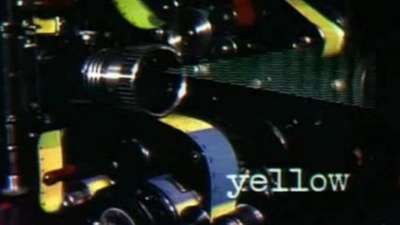


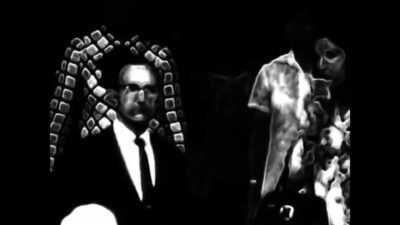

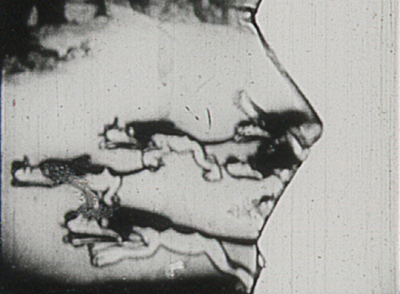

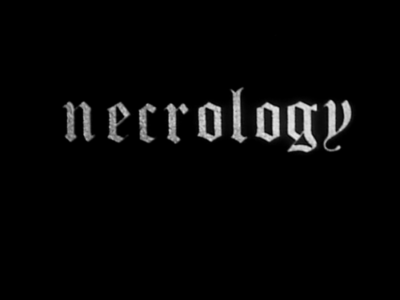




___
Further
Standish Lawder @ Wikipedia
Standish Lawder @ The Film-makers Coop
Standish Lawder @ Artforum
Standish Lawder@ MUBI
Book: Standish Lawder ‘The Cubist Cinema’
Standish Lawder @ Letterboxd
Standish Lawder / ANOTHER YEAR IN LA
Letter from Gerland O’Grady to Standish Lawder
Standish Lawder: My Teacher & Role Model Returns to Yale
Taking A Long Walk Down Standish Lawder’s “The Corridor”
_______
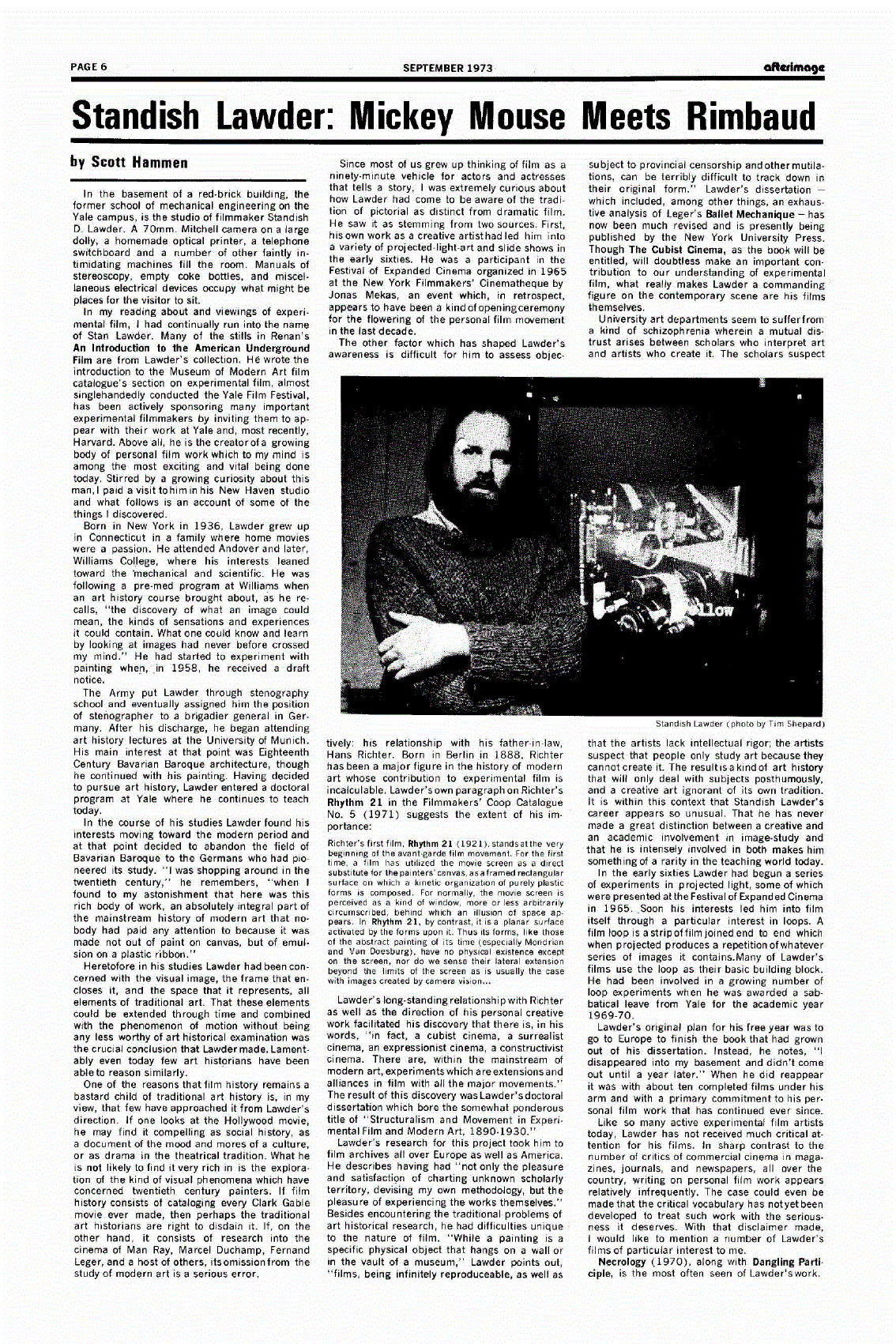
____
Extras
Lecture and Screening with Standish Lawder at Carnegie Museum of Art (4/9/1975)
Trailer: Screening Room Standish Lawder & Stanley Cavell
____
Restoring Runaway (1969) by Standish Lawder
by Mark Toscano
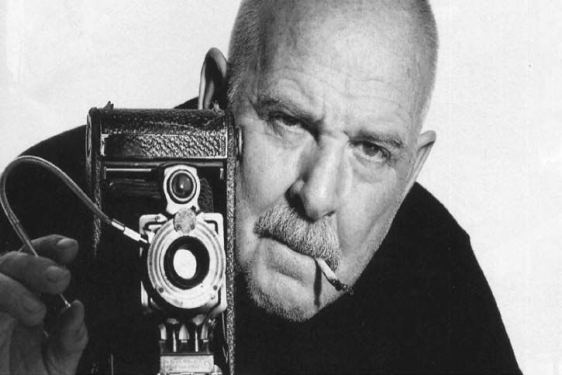
Standish passed away in June of this year. I hadn’t been much in touch with him over the past couple of years, during which time he had departed from his Denver Darkroom and moved to the Bay Area, though I would occasionally receive news. We’ve been able to restore a few of his films, including Necrology (1970), Raindance (1972), and the little-known but quite lovely Catfilm for Katy & Cynnie (1973). Many others are in the works. Some present quite unusual challenges, and may someday be the subject of another post here.
Of the dozens and dozens of experimental/independent filmmakers I’ve worked with over the past eleven years to store, conserve, and preserve/restore their films, Standish is still, as of this writing, the only one who expressed some undisguised skepticism about the Academy of Motion Picture Arts and Sciences taking an archival interest in his work. I remember him saying, “I have no idea why the Academy would be interested in my work. I mean, we thought we were underground back then.” I didn’t know if I should say, “Well, to be honest, although the Academy is totally supportive of this work, it’s actually just me and a few other weirdos I work with who actually *know* your films,” because I nevertheless detected a certain pleasure in his tone at the idea of the Academy seeking out his work for saving. Regardless, he was definitely skeptical, and I’m pretty sure it was primarily the fact that I worked with Robert Nelson (an old and trusted friend of his) that he decided to give me a chance. His skepticism waned as he got a better idea of where I was coming from (he said at one point, early on, “I thought you just had an obsession for possession” but then realized I was just trying to save his damn films.)
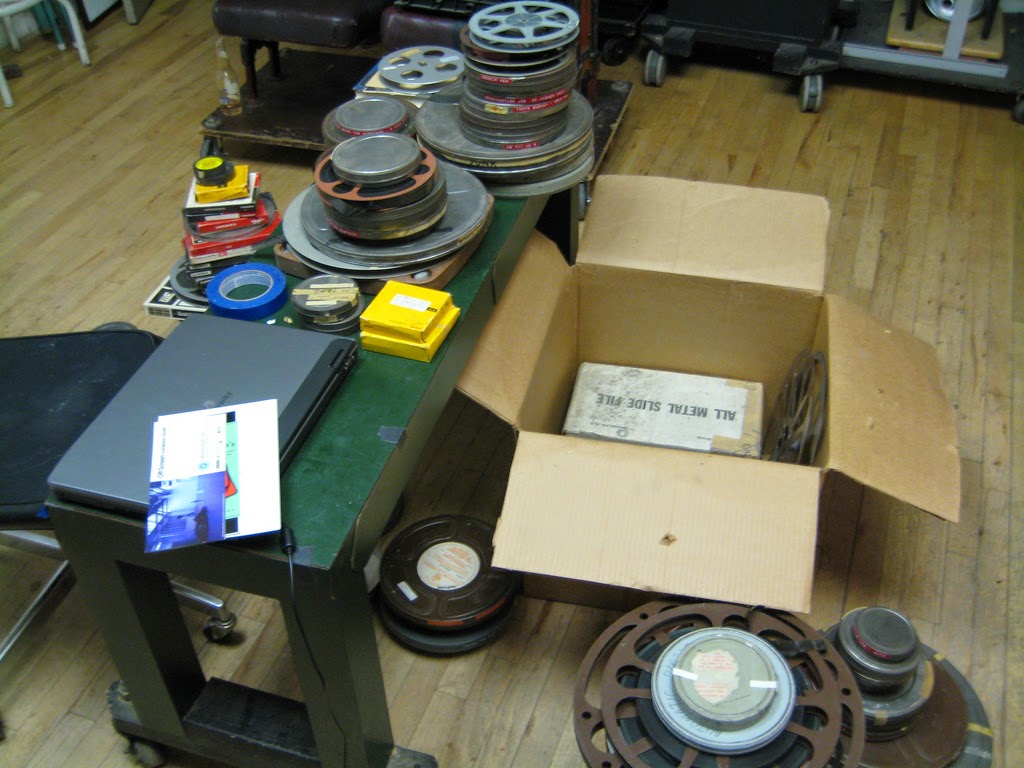
Since Standish’s passing, I’ve been in touch with his daughter Cynthia, and she was kind enough to assemble all of Standish’s remaining film elements that she could locate, pack them up, and send them to me at the archive. They arrived today. They fit in one big box, a few dozen individual cans of stuff. Some are prints, some may be originals (soon to be determined), some are prints of other people’s work, etc.:
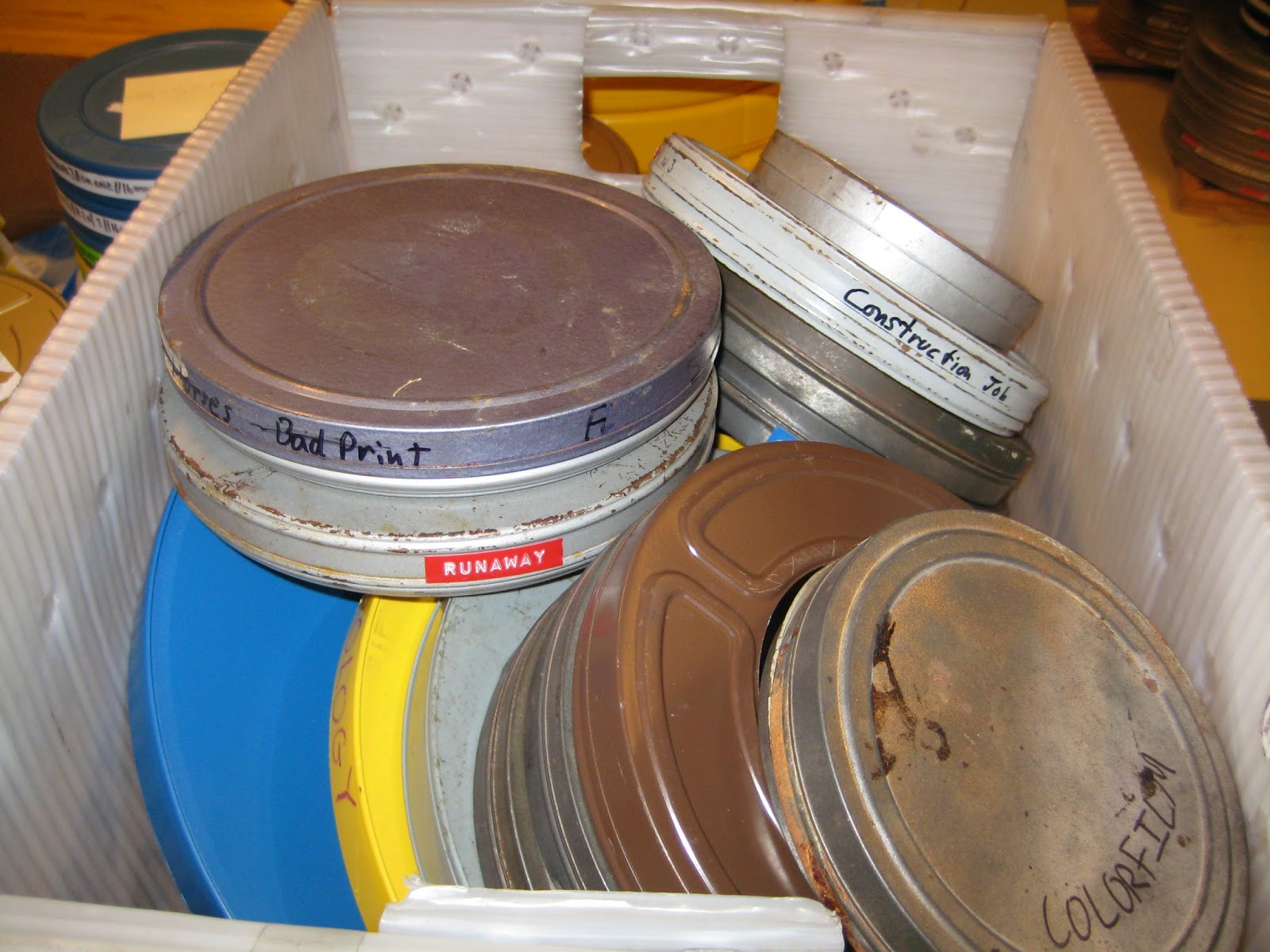
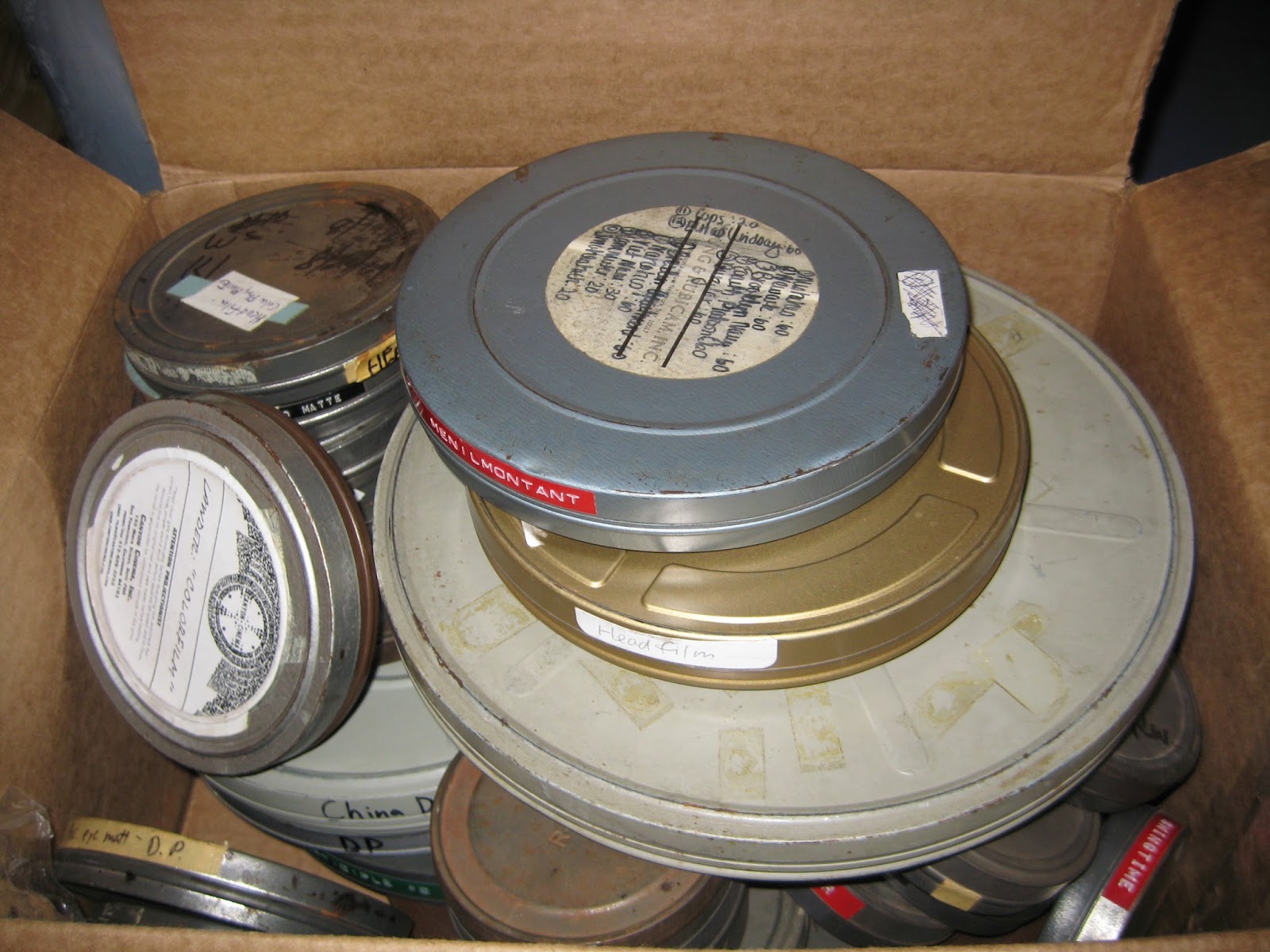
One can in particular promised some very exciting contents:


And just like the labeling says, it contained the original loop Standish used to make Runaway, the film which Jonas Mekas said “achieves the perfection of all his techniques”, with “the visual strength of an old Chinese charcoal drawing.” It felt a bit like finding the missing part of a machine – the coffee can printer – that was required to make it work. A bit worse for wear, but still very readily discernible as a crucial moving part in the dormant apparatus.
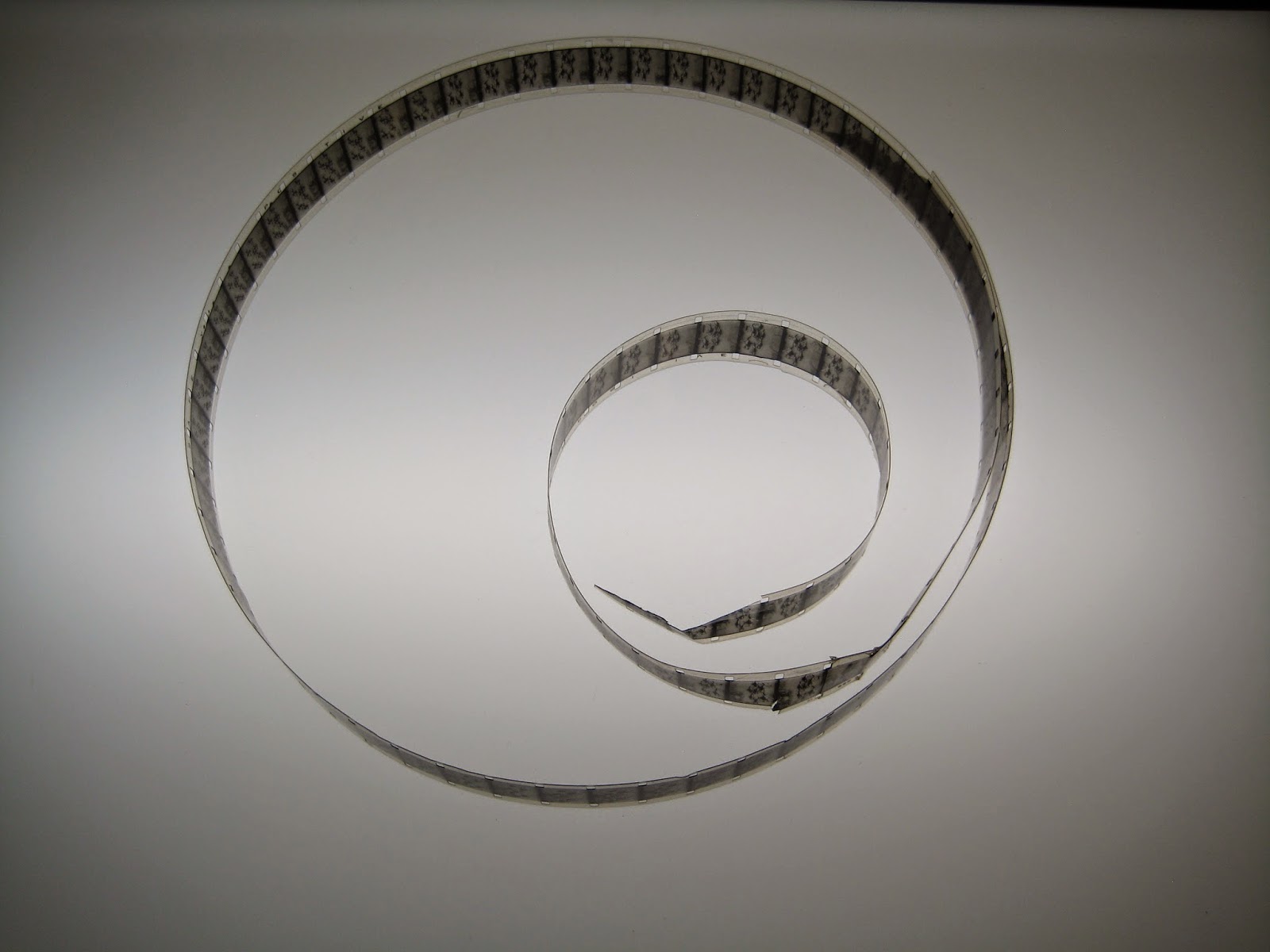
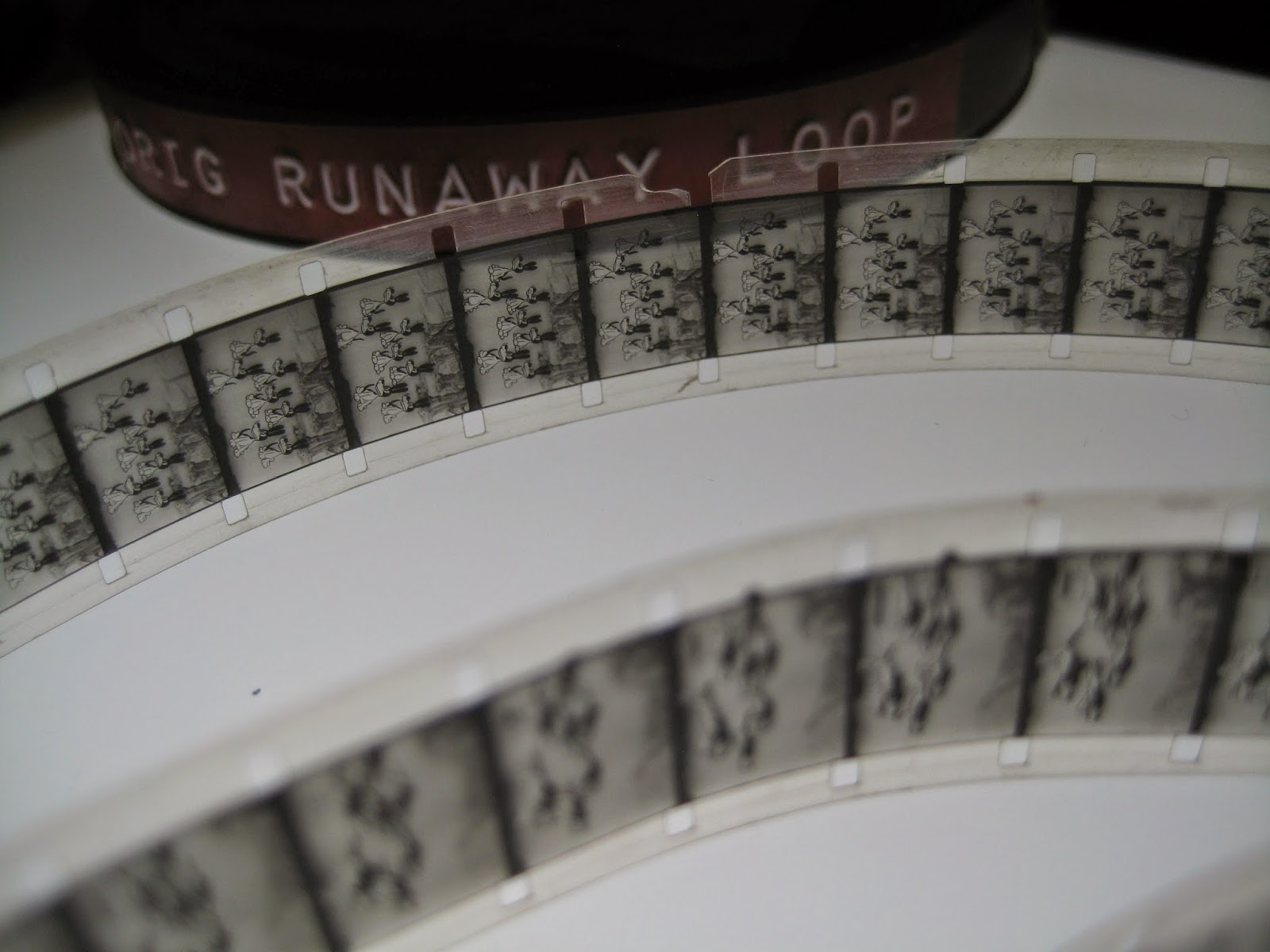
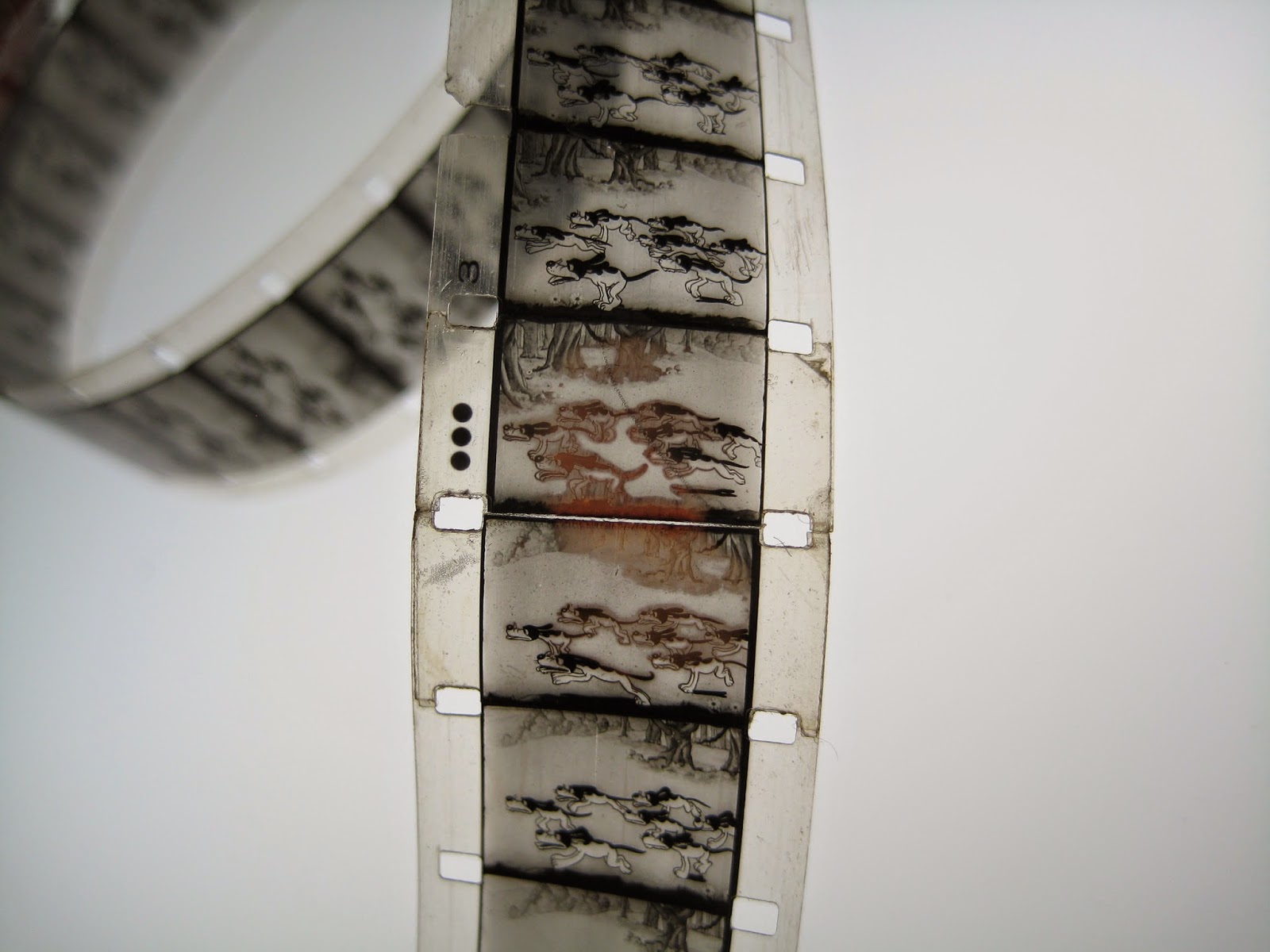
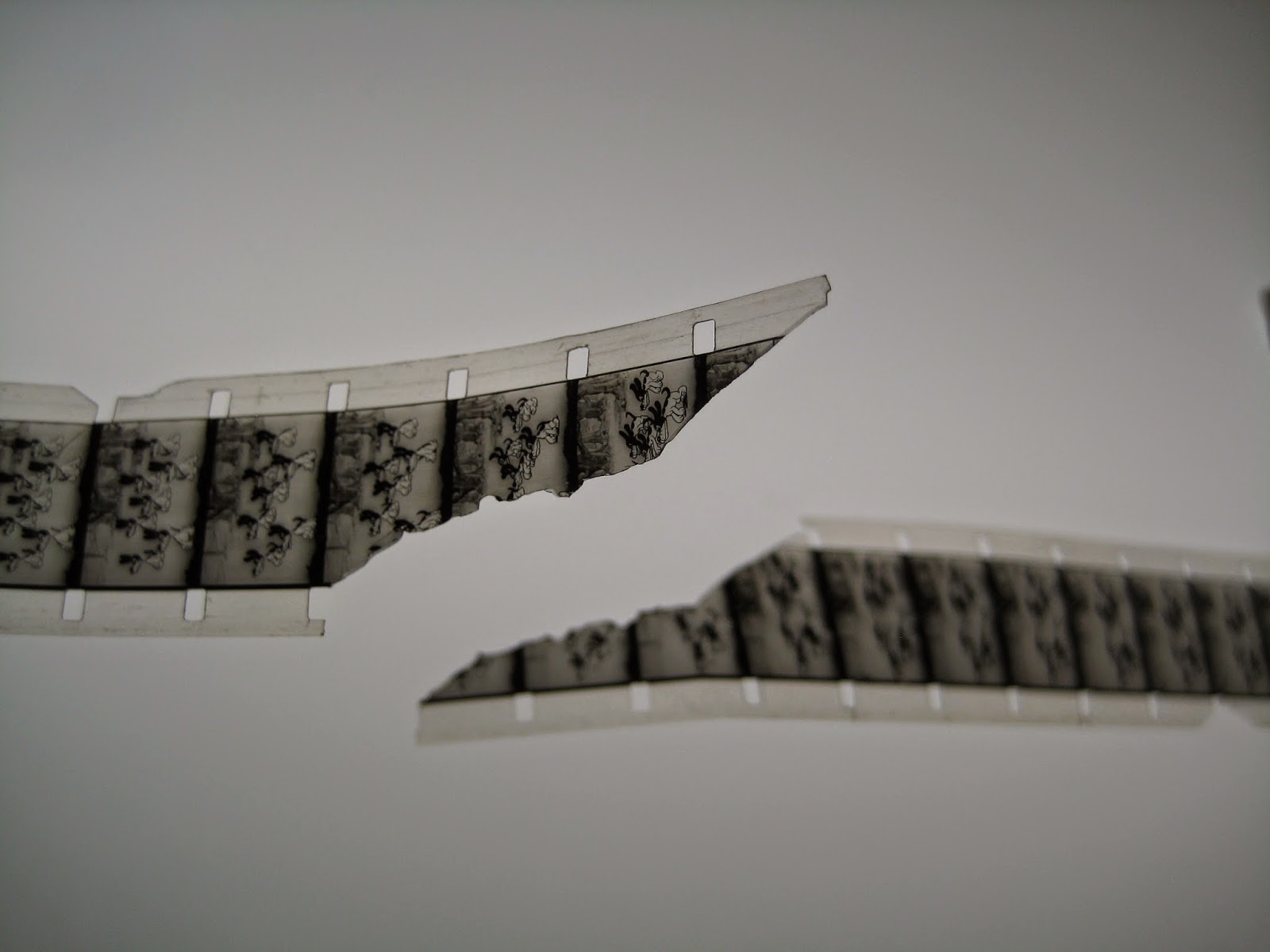

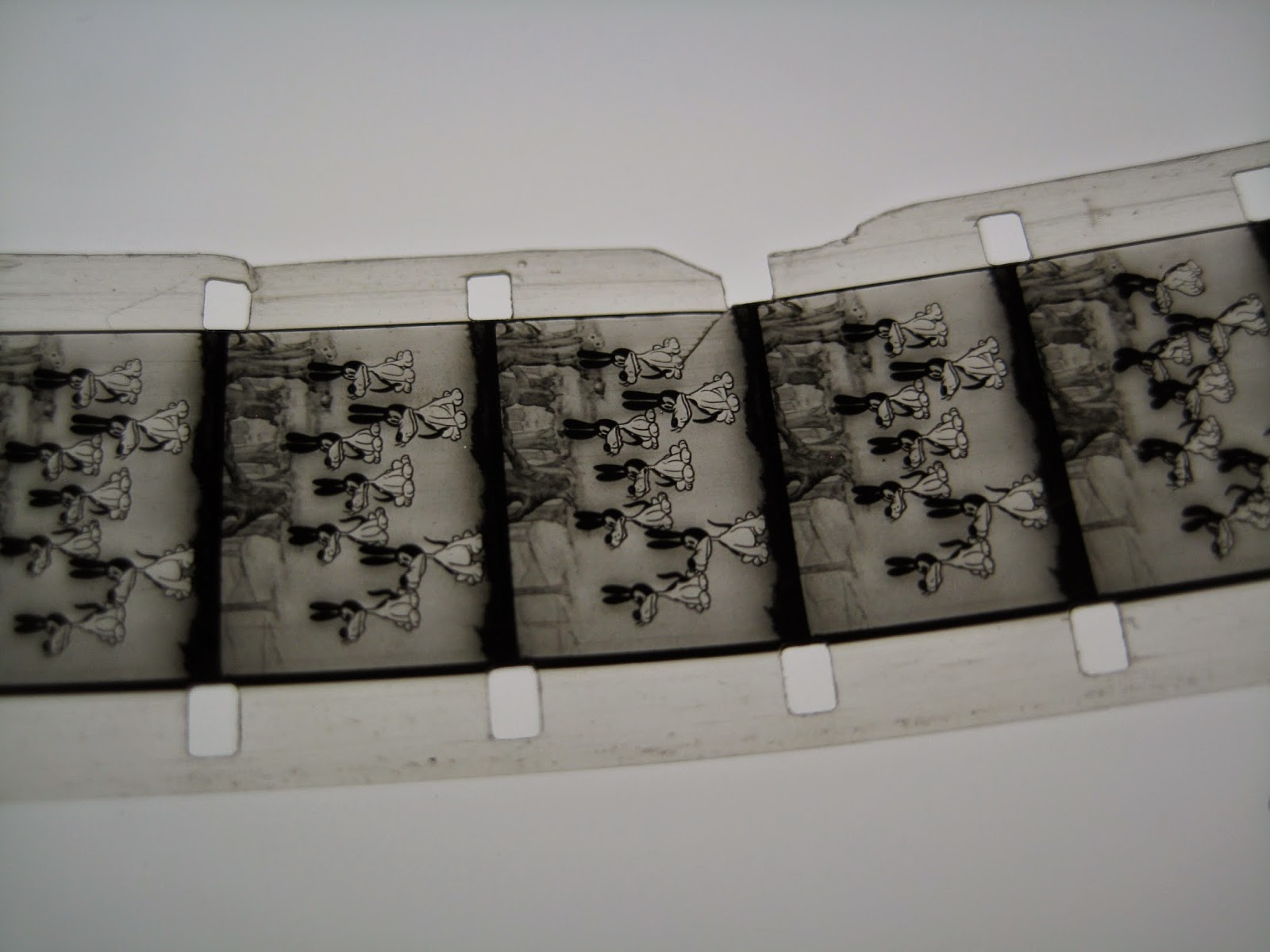
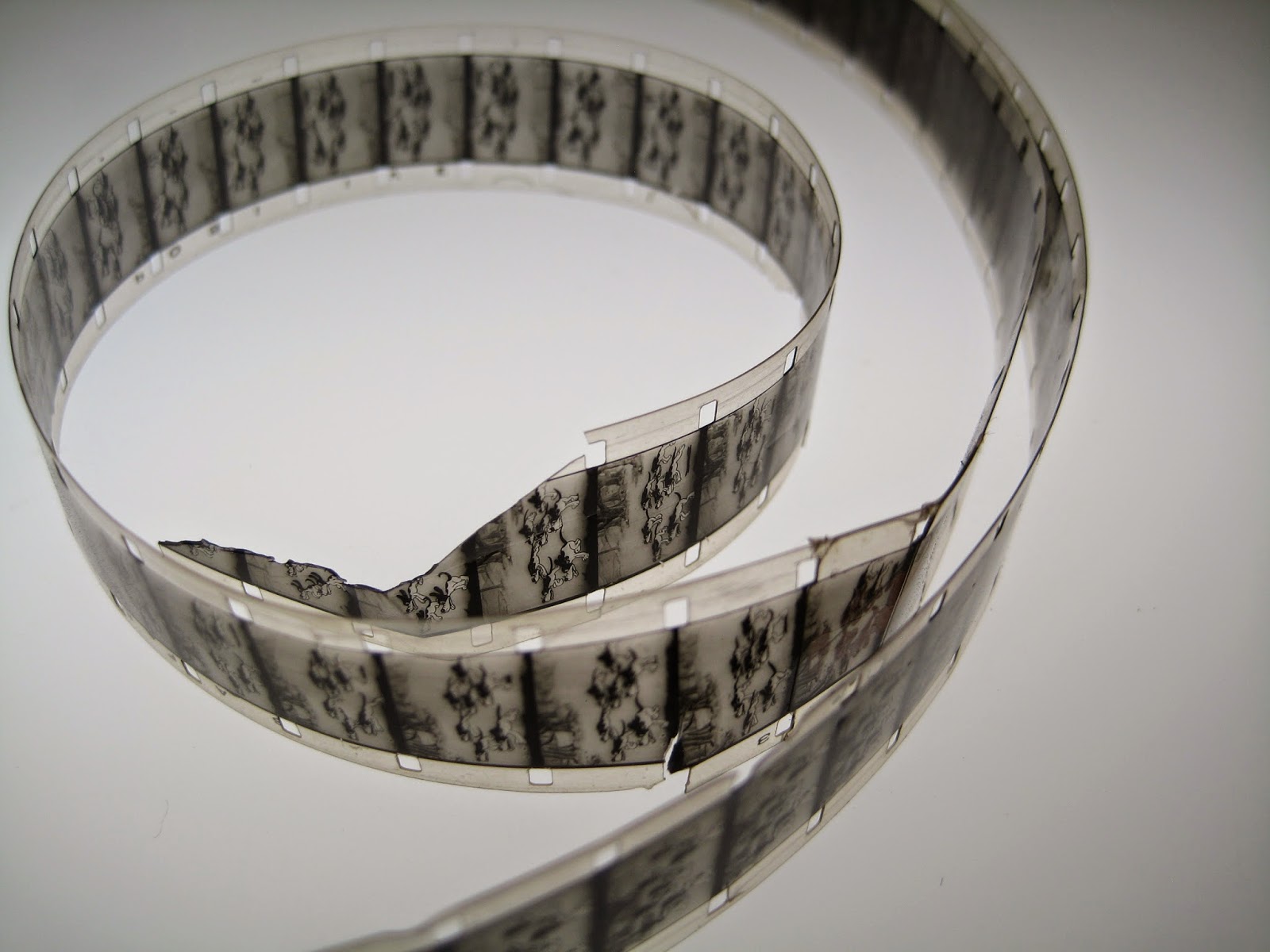
___________
9 of Standish Lawder’s 20 films
___________
Runaway (1969)
‘Lawder achieves the perfection of all his techniques in a small six-minute film called RUNAWAY, in which he uses a few seconds of cartoon dogs chasing a fox. By stop motion, reverse printing, video scanning, and other techniques, by manipulating a few seconds of an old cartoon, he creates a totally new and different visual reality that is no longer a silly, funny cartoon. He elevates the cartoon imagery to the visual strength of an old Chinese charcoal drawing.’ — Jonas Mekas, The Village Voice
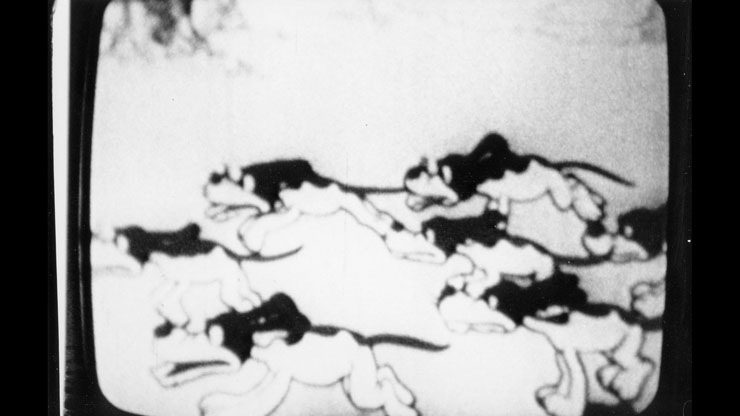
____________
Corridor (1970)
‘CORRIDOR is a marvelous meld of music and cinematic tension that maintains a visual excitement throughout with its constant exploration of horizontal and rectilinear patterns, chiaroscuros and deep grains, pulsating double and negative exposures, and constant tracking shots of a nude figure standing at the end of a long, close corridor. A first-rate piece of work that has to be seen to be appreciated. CORRIDOR is a film of which any filmmaker would be rightly proud.’ — James Childs, New Haven Register
‘An extraordinary exercise in visual polyphony… the pyrotechnic surface is exfoliated with Hegelian relentlessness from an elemental formal core … the many are no less the many for being inescapably the One.’ — Sheldon Nodelman
Excerpt
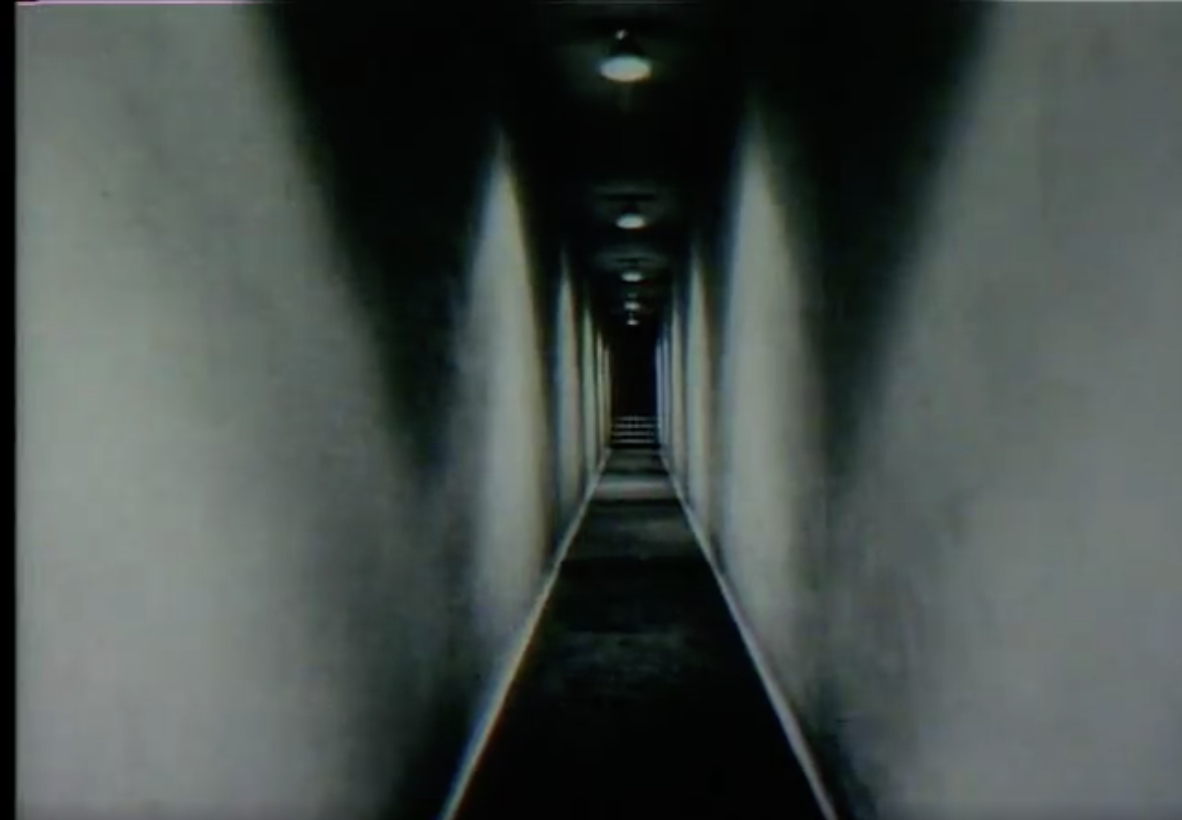
____________
Dangling Participle (1970)
‘Made entirely from old classroom instructional films, DANGLING PARTICIPLE offers a wealth of practical advice on contemporary sexual hang-ups and where they come from. The funniest underground film I’ve ever seen.’ –- Sheldon Renan
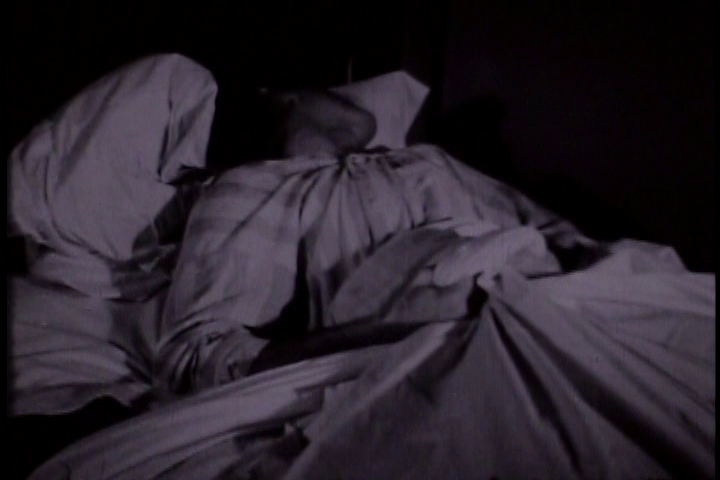
____________
Necrology (1970)
‘In NECROLOGY, a 12-minute film, in one continuous shot Lawder films the faces of a 5:00 PM crowd descending via the Pan Am building escalators. In old-fashioned black and white, these faces stare into the empty space, in the 5:00 PM tiredness and mechanical impersonality, like faces from the grave. It’s hard to believe that these faces belong to people today. The film is one of the strongest and grimmest comments upon the contemporary society that cinema has produced.’ — Jonas Mekas, The Village Voice
‘Without doubt, the sickest joke I’ve ever seen on film.’ — Hollis Frampton
the entirety
_____________
Colorfilm (1971)
‘Further examining the medium of film itself, Colorfilm is a work Lawder made while trying to make a minimalist, “pure color” film. Using spliced-together strips of colored film leader in white, yellow, blue, red, green, etc., Lawder ran the film through a projector and found the results to be quite boring. While he was running the film, though, he noticed how beautiful the colored strips of film looked as they ran through the projector. So, he turned a camera on the projector and filmed the colored film gorgeously winding its way through the projector’s machinery.’ — Noel Black, Ubuweb
the entirety
____________
Raindance (1972)
‘RAINDANCE plays directly on the mind through programmatic stimulation of the central nervous system. Individual frames of the film are imprinted on the retina of the eye in a rhythm, sequence, and intensity that corresponds to Alpha-Wave frequencies of the brain. RAINDANCE becomes an experience of meditative liberation beyond the threshold of visual comprehension. Vision turns inward. The film directs our mental processes, controlling how we think as well as what we see. Images fuse with their afterimages, colors arise from retinal release of exhausted nerve endings, forms dance across short-circuited synapses of the mind. RAINDANCE was made entirely from a scrap of found footage taken from an old animated cartoon representing a sheet of falling rain. The cartoon was called, “The History of Cinema.”‘ — The Film-makers Coop

___________
Intolerance (abridged) (1973)
‘Standish Lawder’s four minute abridgement of D.W. Griffith’s 1916 colossus. Processed “entirely automatically” and ‘skip-printed’ on homemade hardware, Intolerance is played at a speed and rhythm “as fast as possible, and yet one can still follow the narrative continuity of the film itself”; According to Lawder, “A kind of classic comic condensation, an encapsulation of this grand monument”.’ — Letterboxd
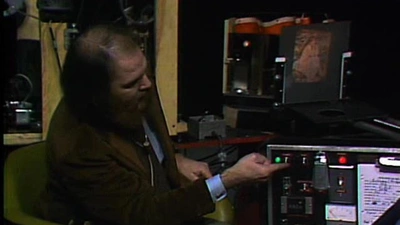
___________
Catfilm for Katy and Cynnie (1973)
‘In the early 70’s, a New York cat-lover and filmmaker named Pola Chapelle produced a “Cat Film Festival,” which was shown in a large downtown NYC auditorium to an audience of more than a thousand cat-lovers. At the time, I lived with my wife Ursula and our daughters Katy and Cynnie, together with many, too many cats. I loved my family but not the cats.’ — Standish Lawder

___________
Electronical Politics (1988)
‘Made in 1988 at the University of California, San Diego during Standish Lawder’s Experimental Film course.’ — FilmMonkey
the entirety
*
p.s. Hey. ** David Ehrenstein, He can be found not so secretly in that novel, yes. ** _Black_Acrylic, Ha ha, I know, that was good, right? I would be thrilled to bits if you want to make that Fungus the Bogeyman Day. I don’t know Briggs’s work, so it would be very instructive for me personally too. Thanks a lot, Ben. ** Steve Erickson, Hi. Good, I hope your ears give you good news. Mm, no one here has mentioned to me that they got the monkeypox vax, but since the same restrictions apply in France, I wonder if they would be so open about getting it, ha ha. ** Bill, Hi, B. I’m very sold on the Okonomiyaki. There’s this great Chinese hole in the wall place in the 10th that even serves cold sesame noodle (!), and I bet I can score Okonomiyaki there. Beeline. Cool, trip possible and on. Soon like soon? ** Misanthrope, Lowkey birthdays are very mature. I sure hope your tiredness passes. A bunch of people I know who had the recent version of Co are going through the same thing. No help to you, but … I don’t even want to think about how old I was when I met you. ** Dominik, In my brief time at uni, Foucault wasn’t really in fashion. Academics were still into Sartre, which tells you how long ago I was in uni. Well, if not this Halloween, then the next one! What a brand. I think Jordan Peele’s films are like that too, to be honest with you. Right? That woman’s face was mysteriousness central. I initially thought it was ‘This guy is full of shit’, but after some repetitions, I wasn’t sure. I also wonder if she is/was famous since the gif maker organised the gif to show her. Anyway, … Huge spider like … huge? Eek. I’ve probably mentioned that when I was a little kid and on a family vacation in Texas this big tarantula chased me through a field for literally half a mile, and to this day whenever I see a tarantula, my stomach does serious flip flops. Love creating an invisible chilly passageway that leads to everywhere I need to go outside today, G. ** Billy, Hi, Billy. Yeah, I’ve seen the Foucault bashing stuff. It just seems like a “brainiac” variation on the kind of attention seeking, non-investigative “bright idea” whose propagation gets the media and its self-styled satellites hot and bothered these days. Blah. ** Robert, Hi. Me too. And the sky is already preheating as I type these words this morning. Dude, pumping out the first draft of a book, shoddy or not — you should see my first drafts, Jesus — is no small thing, in my book at least. So enjoy that. De-agonize yourself to that degree. Mm, I read quite a bit of theory/philosophy back in the 80s and 90s. I’ve never read the really huge guys like Kant or Hegel. Blanchot is my guy. He’s my biggie. I don’t read such stuff all that often recently, although I did go on a fairly rampageous Deleuze reading jaunt a couple of years ago after finally getting why he’s so great. I really like reading it when I do. But I do sort of think of it as experimental nonfiction, which may or may not be a good approach. Thanks. I hope your late week is infinitely chiller than mine. ** Russ Healy, Hey, Russ. It’s true, I too think trans identity would have been a serious flummoxer for him. It’s probably best he didn’t live long enough to be wrong about it. Thanks for reading ‘I Wished’. Interesting about your work as a therapist. Huge respect to you! Ultimately, mine, who I saw only for about two years, did help me a lot and pretty much for the reasons you mention. It just took a while. Trivia: she was also Sylvester Stallone’s therapist, and he sometimes had his appointment just before mine, and I’d see him leaving and looking much deeper than I’ve ever seen him look in any film or photo. Best of the best to you! ** Okay. If you don’t know the unique and wonderful films of Standish Lawder, here’s your chance. Recommended, duh. See you tomorrow/




 Now available in North America
Now available in North America 
Standish Lawder’s a name I haven’t heard from a very long time. Welll worth looking up.
Hi!!
And I think maybe at our uni, it just wasn’t a priority to teach people to think for themselves. Which is pretty sad (although maybe not too surprising).
I think I’ve only seen “Get Out,” and yes, I definitely had the same experience – initially, I was interested, and the concept seemed exciting, and then it just… went way too overboard and lost its appeal.
I often wonder about people in memes and gifs – whether they get recognized once their faces go viral.
Okay, my spider was nowhere near the size of a tarantula, which is lucky because I would’ve died if that’d been the case. Just imagining the childhood scene you described made me shiver. Fuck.
Did love save you from the heat somehow…? Love accessing that dreamy place where all the videos that got removed from YouTube are stored and reuploading that one-minute home video about Sylvester Ulv I used to be obsessed with, Od.
Dennis, Yes, lowkey indeed. Great cake, good meal. We ordered carryout from an Italian chain that actually isn’t bad. Then watched some TV. Kayla and I have been watching this goofy series with Steve Martin, Martin Short, and Selena Gomez. It’s cute and fun, which is all I was looking for when we came upon it.
Yeah, just feeling tired, that’s about it. Otherwise, not much as far as other symptoms once that slightly elevated temperature went away. I told the fam we’re fortunate to get this version and not the earlier ones. I think even mom is starting to feel better. Fingers crossed. Watch, I just jinxed us and we’ll all some sort of weirdo rebound thing or something. Eek.
I enjoyed Necrology a whole lot there. The end credits were especially worth sticking around for.
Here in the East Leeds Recovery Hub I’ve been moved into a larger, more spacious room. The food won’t win any prizes but still, I’m being fed 3 times a day so who am I to complain? Staff are all lovely. The new flat will be my home in just a matter of time.
The Fungus the Bogeyman Day will be started very soon!
Hey, Dennis,
Brian here again, after another month’s absence. As usual I’ve been keeping up with everything. I only haven’t written because I feel I don’t have anything very much interesting to say most of the time, and since I can guess how high-maintenance/time-consuming this blog and all the replying must be, I figured it’d be best to just mostly observe. But I had to write today because I finished reading “My Loose Thread”. It’s the only one of your novels I hadn’t read yet, so now I’ve done them all, and while I feel kind of sad about that, I’m pleased that I ended on what I do think is one of your best. It troubled me so much that during a recent insomniac spell I found it was actually informing my nightmares (for me a very rare event from literature and a major plus). It was so unbelievably sad and scary, but also very tender in the way that all your work is, to put it way too simply. I really loved it and I just wanted to voice my admiration for your achievement. When I put down the book, along with everything else I was feeling, I just had this very sudden and overwhelming renewed wave of total gratitude for everything you do in your writing, so I suppose all I really want to say is thank you.
I read the book while on a break of as-yet indefinite length from William Gass’ “The Tunnel”, the doorstopper I’m currently trudging my way through. Going from Gass to your novel is like going from, I don’t know, Baz Luhrmann to Bresson (not to liken Gass to a hack, of course). Very weird change of pace. I’m really struggling with Gass’ prose, admittedly, and not because of the subject matter or anything. I used to really go for this kind of overripe, lush, beautifully overwrought language, and I still often do (I recently reread Genet’s “Funeral Rites”), but now I’m more ambivalent about it. He emphasizes the sentence so much. Every sentence is like a massive oil painting or something. And they’re all incredibly beautiful and clearly the work of a genius, but I’m starting to wonder if this is all just a little too baroque for me, like too much whipped cream. Or maybe I just find reading it difficult, but I haven’t had a problem with this sort of language in the past, so I think it’s something about this particular voice–fireworks all the time wears me out or something. Do you have any opinion on Gass, or thoughts on that type of language more generally?
I hadn’t heard of Standish Lawder before today. The films all look awesome. I watched “Corridor”, which is totally eerie and wonderful. It very loosely reminds me of another film I watched recently, “In Order Not to Be Here”, in the way it builds anxiety through these monotonous empty space. Although they’re very very different in terms of camera movement and sound and expressionism and general theme, of course–the comparison doesn’t really hold water, that was just what was on my mind. Anyway, this comment has bloated way past its prime already, so I’ll duck out for now. I really hope you’re well, that the film preparations are going as ideally as possible, that everything’s good, etc. Happy Friday!
I was not able to finish my ear exam today. Turns out being strapped to a chair swinging around at various speeds for 15 minutes in complete darkness is a great way to induce a panic attack! I’m home now and much less dizzy and anxious, but I have no idea where future treatment is heading. I just feel exhausted and resigned at the moment. my neurologist is supposed to contact me; seeing her again is probably the next step.
Here’s my Gay City News review of LE TEMPS PERDU: https://gaycitynews.com/reading-proust-le-temps-perdu-documentary/
I kinda like the fact that although my review’s intended to be negative, it’s stirred up interest in the film on Facebook.
I suppose someone could just lie and claim they went to an orgy or had three Grindr hookups last weekend to get the monkeypox vaccine, but even then, the current supply appears to be completely exhausted.
Hey Dennis!
In the UK it is midnight on the 12th, My big gig is in 9 days!! aaaa, the second part of my costume came so I promptly did a mini shoot, I really liked how it came out, it has a sort of anime vibe to it, alongside the sort of deep web voyurism vibe, theres a eroticism there but a stoicism of jockness.
I have my final rehersal on the 15th, a dress rehersal of sorts where I will confgiure the costume changes, I sent my lighting guide off just now so It should bring everything into place, so exciting but also incredibly fucking nervousssssssssssss. I also started doing free weights at the gym, its nice to feel my muscles twitch after ive done a workout targeting new areas, its like loads of little microcramps going off in littke tiny intervals, its a gooood feeeling,
heres a link to some photos, I have linked my insta and twitter posts in case on of the links dont work lol, I like my legs in these.
https://twitter.com/ANGUSRAZE/status/1557834957153771521
https://www.instagram.com/p/ChIjhq4LPeh/
heres some bonus ones,
https://twitter.com/ANGUSRAZE/status/1557826941780217858
https://twitter.com/ANGUSRAZE/status/1557838653287718913
https://twitter.com/ANGUSRAZE/status/1557838907085131776
https://twitter.com/ANGUSRAZE/status/1557851949122441217 (and a selfie hahaha)
lots of love!!!!!!!!!!!
Ryan
Experimental nonfiction is a pretty great way to think about it, I’ve been tossing that phrase around my head a little bit today. Especially coming from a pretty analytic background, a lot of continental stuff just feels immediately goofy to me when I read it, but if you think of it like that instead of as strict philosophy then you can sort of carve out a different niche for it.
Corridor is pretty interesting, though I thought it could umm be shorter. I’ve had some ideas for my take on these infinite traversal films, but never got around to it. Maybe some day.
Also reminds me of the poster for Jessica Hausner’s Hotel, which I quite enjoyed:
https://letterboxd.com/film/hotel-2004/
Bill